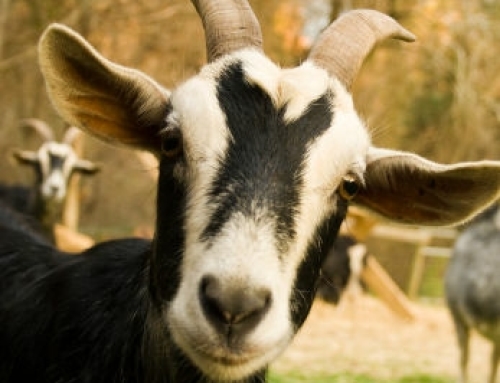Sheep are small ruminants closely related to the goat that are raised mainly for their wool as well as for food. Worldwide, there are over a thousand breeds of sheep according to the Food & Agriculture Organization. In the USA, the American Sheep Industry Association (ASI) has identified 47 unique breeds of domestic sheep. The ASI has further categorized these domestic breeds into six types, namely the ‘meat breeds,’ the ‘fine wool breeds,’ the ‘long wool breeds,’ the ‘dual purpose breeds,’ the ‘hair breeds,’ and the ‘minor breeds.’
Most sheep and lambs in American farms and ranches are of the meat breed variety which are raised primarily for 
 Sheep grow both hair and wool fibers although hair breeds have more hair fibers than woolly fibers. They also tend to shed their coats annually and usually do not require shearing, crutching, or docking. There are 7 hair breeds and they are the Barbados Blackbelly and American Blackbelly, the California Reds, the Dorper, the Katahdin, the Romanov, the Royal White Sheep, and the St. Croix. There are two general types of hair sheep in the United State: “improved” and “unimproved”. The unimproved breeds tend to be indigenous sheep breeds that have adapted well to the local environment in which they evolved like the Barbados Blackbelly and the St. Croix. The improved hair breeds on the other hand are crosses between regular hair breeds and wooled meat breeds. Examples include the Dorper, the Katahdin and the Royal White Sheep.
Sheep grow both hair and wool fibers although hair breeds have more hair fibers than woolly fibers. They also tend to shed their coats annually and usually do not require shearing, crutching, or docking. There are 7 hair breeds and they are the Barbados Blackbelly and American Blackbelly, the California Reds, the Dorper, the Katahdin, the Romanov, the Royal White Sheep, and the St. Croix. There are two general types of hair sheep in the United State: “improved” and “unimproved”. The unimproved breeds tend to be indigenous sheep breeds that have adapted well to the local environment in which they evolved like the Barbados Blackbelly and the St. Croix. The improved hair breeds on the other hand are crosses between regular hair breeds and wooled meat breeds. Examples include the Dorper, the Katahdin and the Royal White Sheep.

Under the ASI classification, there are 13 so-called ‘minor breeds’ of domestic sheep. They are the Black Welsh Mountain, the Blueface Leicester, the California Variegated Mutant, the Clun Forest, the Gulf Coast, the Icelandic, the Jacob, the Karakul, the Navajo-Churro, the Scottish Blackface, the Sennybridge Welsh Mountain, the Shetland, and the Wiltshire Horn. Sheep of the ‘minor breed’ variety are generally raised for specialty wools. For instance, the coarse wool produced by the Icelandic, the Karakul, the Navajo-Churro, and the Scottish Blackface are used in manufacturing carpets.




Hey there! This is my first visit to your blog!
We are a group of volunteers and starting a new initiative
in a community in the same niche. Your blog provided us valuable
information to work on. You have done a marvellous job!